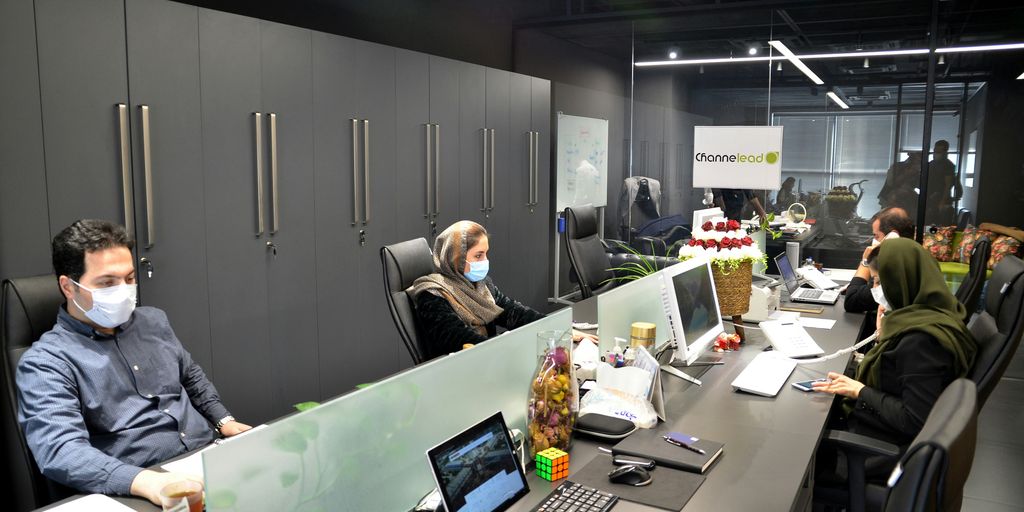So, you want to get people talking about leadership, huh? It’s not always easy to find topics that really stick, especially when you’re trying to get everyone on the same page about growing the business and coming up with new ideas. This article is all about those juicy leadership topics for discussion that can actually make a difference. We’re going to look at how leaders can create a space where new thoughts pop up naturally, how to get everyone learning and growing, and why talking openly is a really big deal. Plus, we’ll cover how to keep things on track and celebrate when good things happen.
Key Takeaways
- Building a company culture where new ideas are welcome means leaders need to show they’re open to trying different things and learning from mistakes.
- Getting everyone to think about how they can improve and learn all the time is key. This includes learning from when things don’t go as planned and getting good feedback.
- When leaders talk openly with their teams, share ideas, and make sure everyone feels safe to speak up, great things happen.
- Making sure everyone knows what the company is trying to achieve with new ideas and how it fits with the main goals helps everyone work together better.
- Leaders should look out for new ideas, give credit where it’s due, and celebrate the successes, big or small, to keep the momentum going.
Cultivating A Culture Of Innovation
In today’s fast-paced world, staying ahead means constantly coming up with new ideas and ways of doing things. It’s not just about having a few creative people; it’s about building an environment where everyone feels encouraged to think differently and contribute. When markets shift and customer needs change, a company’s ability to innovate can really make or break it. Leaders play a big part in this, setting the tone for how new ideas are handled.
The Importance Of Innovation In Leadership
Innovation isn’t just a buzzword; it’s what keeps businesses relevant. When leaders make innovation a priority, it signals to the whole company that new thinking is valued. This means encouraging team members to share their thoughts, even if they seem a bit out there at first. An "open door" policy from leadership can make a huge difference, letting people know their ideas are welcome. Leaders who create spaces where trying new things isn’t scary, but rather expected, help their teams move forward. Companies that encourage teamwork and give people the freedom to explore are often the ones that perform best. It’s about making sure everyone feels they can contribute to the company’s future growth.
Characteristics Of An Innovative Leadership Team
What does a leadership team that’s good at innovation actually look like? For starters, they’re usually open to hearing new ideas, even if they’re different from what’s been done before. They’re also willing to try things out, understanding that not every experiment will be a home run. A commitment to getting better all the time is key, too. This kind of team doesn’t just talk about innovation; they live it, encouraging everyone else to do the same. They have a clear idea of where they want to go with innovation and make sure their goals line up with what the company is trying to achieve overall. Plus, they can adjust their plans when things change, which is pretty important these days.
Embedding Innovation Into Your Company Culture
Making innovation a part of your company’s DNA takes deliberate effort. It starts with a clear vision that explains why innovation matters and what it looks like for your specific business. This vision needs to be shared widely so everyone understands their role. When leaders actively support this vision, it sends a strong message. It helps create an atmosphere where people feel comfortable speaking up and sharing new concepts without worrying too much about criticism. This kind of openness allows different ideas to mix and match, leading to better solutions. It also means removing unnecessary rules or processes that can slow down creative thinking. Investing in training and skill development is also a big part of it; when people learn new things, they often come up with new ideas. Setting clear goals for innovation projects helps keep everyone focused and shows progress along the way.
Fostering Growth Mindset And Continuous Learning
It’s easy to think of innovation as just coming up with new gadgets or services, but it’s really about how we approach problems and learning. Leaders who really want their teams to grow and come up with fresh ideas need to make sure everyone feels like they can learn and get better, even when things don’t go as planned. This means creating an environment where trying new things is encouraged, and not being afraid to mess up is part of the deal.
Embracing Learning From Setbacks
When a project doesn’t hit the mark, it’s tempting to just move on. But good leaders know that’s a missed opportunity. Instead, they’ll get the team together to talk about what happened. What worked well? What could have been done differently? It’s not about blaming anyone; it’s about figuring out what we can learn. This kind of honest reflection is key to getting better. Think of it like this:
- Post-Project Reviews: Schedule time after projects to discuss outcomes, both good and bad.
- Failure as a Data Point: Treat mistakes not as dead ends, but as information that guides future actions.
- Sharing Lessons: Make sure what’s learned gets shared so everyone benefits.
Promoting Professional Development
People need chances to grow their skills. This isn’t just about formal training, though that’s important. It’s also about giving people opportunities to stretch themselves. Maybe it’s taking on a new responsibility, working with a different team, or even just having time to explore a new technology. When leaders support this, they’re showing that they believe in their team’s potential.
- Skill Workshops: Organize sessions focused on new tools or techniques.
- Mentorship Programs: Pair less experienced staff with seasoned colleagues.
- Cross-Training: Allow employees to learn skills from other departments.
Offering Constructive Feedback
Giving feedback can be tricky. Nobody likes hearing criticism, but it’s necessary for growth. The trick is to balance it. When you point out something that needs improvement, also highlight what the person did well. This makes the feedback easier to accept and more useful. It’s about helping people see their strengths and areas where they can develop, rather than just pointing out flaws. It’s a two-way street, too; leaders should be open to feedback themselves.
Empowering Teams Through Open Communication

When we talk about getting teams to really work together and come up with new ideas, communication is the big one. It’s not just about talking; it’s about how we listen, share, and make sure everyone feels heard. Think about it – if people are afraid to speak up or share a half-baked idea, a lot of potential gets lost before it even starts. We need ways for everyone to chip in, no matter their role.
Channels For Idea Generation
Getting good ideas flowing means setting up clear paths for them. It’s not enough to just say, “Bring me your ideas.” We need actual places for them to land. This could be as simple as a suggestion box, but honestly, those often get ignored. Better options include a dedicated online forum or a specific Slack channel where people can post ideas anytime. Regular brainstorming sessions, maybe once a month, can also work, but make sure they’re structured so one or two loud voices don’t dominate. The key is making it easy and normal for people to share what’s on their mind.
Leveraging Collaboration Tools
Technology can really help here. Tools like shared documents, project management software, or even just a well-organized shared drive mean everyone can see what’s happening and contribute. When plans and progress are out in the open, it cuts down on confusion and makes it easier for people to jump in or offer suggestions. It’s like having a shared whiteboard that everyone can access and add to, keeping things transparent and accessible.
Ensuring Psychological Safety
This is a big one. People need to feel safe to speak up, even if their idea isn’t perfect or if they need to point out a problem. If the reaction to a mistake or a less-than-stellar idea is blame or ridicule, people will just shut down. We want an environment where it’s okay to try something new, and if it doesn’t work out, we talk about what we learned, not who messed up. This means leaders have to model this behavior themselves, admitting their own mistakes and showing how they learn from them. When people feel safe, they’re more likely to share those wild ideas that could actually be game-changers.
Facilitating Cross-Functional Teams
Sometimes, the best ideas come when people from different parts of the company work together. Someone in marketing might have a perspective on a product that engineers haven’t considered, or someone in customer service might see a recurring issue that operations can fix. Setting up projects where people from various departments have to collaborate forces them to talk to each other and share different viewpoints. This mix of backgrounds and experiences can spark creativity that wouldn’t happen if everyone stayed in their own lane. It’s about breaking down those departmental walls and getting different minds working on the same problem.
Strategic Alignment And Innovation Vision
When we talk about innovation, it’s not just about coming up with a cool new gadget or service. It’s about making sure that whatever new ideas we have actually fit into the bigger picture of what the company is trying to achieve. Without this connection, innovation can feel a bit random, and honestly, a waste of time and resources. So, getting this alignment right is pretty important.
Defining A Unified Purpose For Innovation
Think of this as the ‘why’ behind all our efforts to be innovative. It’s about creating a clear, shared understanding of what we’re trying to accomplish with new ideas. This purpose acts like a compass, guiding everyone in the same direction. When people understand the goal, they’re more likely to contribute meaningfully and feel like they’re part of something bigger. It helps everyone see how their individual contributions fit into the overall plan, making the whole process feel more connected and purposeful.
Aligning Innovation With Strategic Goals
This is where we make sure our innovative projects aren’t just happening in a vacuum. We need to connect them directly to what the company wants to achieve in the long run. If the company’s main goal is to expand into new markets, then our innovation efforts should focus on ideas that support that expansion. It’s about being smart with our resources and directing our creative energy where it will have the most impact. This way, innovation isn’t just a side project; it’s a core part of how we grow and succeed.
Here’s a simple way to think about it:
- Company Goal: Increase market share by 15% in the next two years.
- Innovation Focus: Develop new product features that appeal to underserved customer segments.
- Expected Outcome: Attract new customers and boost sales, directly contributing to market share growth.
Championing Leadership Involvement
For innovation to really take root, leaders need to be visibly on board. It’s not enough for them to just say they support innovation; they need to actively participate. This means allocating budgets, removing roadblocks, and showing genuine interest in new ideas. When leaders are involved, it sends a strong message throughout the organization that innovation is a priority. It encourages others to step up and contribute, knowing that their efforts are backed by the people in charge. Leaders who champion innovation set the tone for the entire company.
Overcoming Challenges In Leadership Innovation
It’s easy to talk about innovation, but actually making it happen in a company can be tough. Lots of things get in the way. People are used to doing things a certain way, and change can feel scary. Plus, if folks think they’ll get in trouble for trying something new that doesn’t work out, they’ll just stick to the safe path. And if different departments don’t talk to each other, good ideas can get lost in the shuffle.
So, how do we get past these roadblocks?
- Engage Employees and Communicate Effectively: You can’t just tell people to innovate; you have to bring them along. This means talking openly about why innovation matters, what the goals are, and how everyone fits in. When people feel heard and understand the ‘why,’ they’re more likely to get on board. Think of it like planning a big group trip – everyone needs to know where you’re going and why, not just get a ticket shoved in their hand.
- Foster Transparency and Sharing: Break down those walls between teams. When information flows freely, people can build on each other’s ideas. Imagine a potluck where everyone brings a dish, but no one knows what anyone else is bringing – it might be okay, but it’s better if people can coordinate a bit. Sharing progress, challenges, and even failures helps everyone learn and adapt faster.
- Focus on Quick Wins and Clear Objectives: Big, long-term innovation projects are important, but they can also feel overwhelming. It’s helpful to break things down into smaller, achievable goals. Celebrating these smaller successes builds momentum and shows people that innovation is working. It’s like training for a marathon; you don’t just run 26 miles on day one. You build up to it, celebrating each milestone along the way.
Here’s a quick look at how these strategies tackle common issues:
| Challenge | Strategy |
|---|---|
| Resistance to Change | Engage Employees, Communicate Effectively |
| Fear of Failure | Ensure Psychological Safety |
| Siloed Departments | Foster Transparency & Sharing |
| Sustaining Engagement | Focus on Quick Wins & Clear Objectives |
Getting these pieces right helps create an environment where new ideas aren’t just welcomed, they’re expected. It’s about making innovation a normal part of how the company operates, not some special project that happens once in a while.
Recognising And Celebrating Innovative Efforts
It’s easy to get caught up in the day-to-day grind, but remembering to acknowledge and celebrate the people who are pushing boundaries is super important. When folks come up with new ideas or find better ways to do things, a little recognition goes a long way. It shows everyone that creativity isn’t just a nice-to-have; it’s something the company actually values. This can really get people excited about contributing more.
Incentivising Creativity
Think about how you can build rewards into the system that specifically call out creative thinking. It doesn’t always have to be a big bonus, though that’s nice too. Sometimes, a simple shout-out in a team meeting or a small token of appreciation can make a big difference. We want people to feel good about trying new things, even if they don’t always pan out perfectly.
Celebrating Successful Innovations
Make it a habit to celebrate when something new works. It doesn’t matter if it’s a small tweak or a major breakthrough; acknowledging these wins reinforces the importance of innovation. This could be anything from a company-wide email announcing a successful project to a special lunch for the team involved. Seeing successes get noticed encourages others to put their ideas forward.
Recognising Leadership Contributions
Leaders play a big part in this, too. When leaders actively support new ideas, show they’re willing to take smart risks, and talk about the importance of innovation, it sets a good example. It shows the whole company that this is a priority. Leaders who champion new approaches and help teams overcome hurdles deserve a nod for their efforts in building this kind of environment.
The Role Of Risk And Adaptability In Leadership
Markets change. Customers want different things. Technology moves fast. Your company’s ability to come up with new ideas can really make or break it. It’s important to build a way of thinking about innovation right into your leadership team. An innovative leadership team is open to new ideas, likes to try things out, and wants to keep getting better. This kind of team doesn’t just show others what to do; it gets everyone involved in the big picture of innovation. Knowing these traits is the first step to changing how leaders work in your company.
Cultivating A Culture Of Calculated Risks
Leaders who are good at this create an environment where taking chances is just part of growing, not something weird or unexpected. They understand that trying new things, even if they don’t always work out perfectly, is how you move forward. It’s about making smart bets, not just throwing things at the wall. This means leaders need to be okay with not having all the answers upfront and be willing to learn as they go. When leaders show they can handle outcomes, good or bad, it makes their teams feel more confident. People learn that trying something new doesn’t automatically mean trouble. This kind of support helps people step outside their usual routines, knowing they have backup whether they succeed or learn from a mistake. It’s about building trust so people feel safe to explore new paths. We need to get better at looking at what went wrong with projects to find lessons that help the company move ahead. Leaders who build this kind of atmosphere are often involved with their teams. They clearly share a vision that values creative solutions and balances freedom with responsibility. This sets a clear path for innovation, one that’s not just about getting new ideas, but about creating the space for those ideas to grow everywhere in the company. This approach helps your company adapt more easily to what’s happening in the market. Leaders who support these strategies, helping teams work together to find creative answers, build a company that doesn’t just keep up with the times but helps shape its industry’s future. This is how you can build a more adaptable business.
Empowering Autonomy For Idea Execution
Giving people the freedom to run with their ideas is a big deal. When you trust your team members to make decisions and carry out their plans, they feel more ownership. This sense of responsibility can lead to some really great results. It’s like giving someone the keys to a project and letting them drive. Of course, there need to be some guidelines, but too much control can stifle creativity. Companies that allow for more teamwork and personal freedom are often the ones that perform better. Think about it: if you know you have the backing to try something new, you’re more likely to put your all into it. This means leaders need to be clear about what needs to be done but then step back and let their teams figure out the best way to do it. It’s a balance between providing direction and allowing for independent action. This approach helps people feel more invested in the outcome.
Navigating Dynamic Business Landscapes
Things are always changing, right? Markets shift, what customers want changes, and technology advances faster than we can keep up. Being able to innovate is key to staying relevant. Leaders need to be ready to change their plans when needed. This means staying updated on what’s happening in your field and being open to new ways of doing things. It’s not about sticking to the old ways just because that’s how it’s always been done. Instead, it’s about looking at new information and adjusting course. This adaptability helps keep the company ahead of the curve. It’s about being flexible and responsive to whatever comes your way. This means leaders should:
- Regularly check if their plans still make sense with the company’s main goals.
- Put systems in place to help innovation happen in an organized way.
- Look at what worked well and what could be better.
- Use technology to help evaluate their strategies.
- Encourage everyone to keep learning so innovation stays strong.
Wrapping Up: Keeping the Innovation Engine Running
So, we’ve talked a lot about how leaders can get their teams thinking differently and coming up with new ideas. It’s not just about having a few brainstorms; it’s about building a whole system where new thoughts are welcomed and tried out. Remember, markets change, customers want new things, and tech keeps moving. If your leadership team isn’t on board with trying new approaches, your company could get left behind. Keep talking, keep sharing, and don’t be afraid to try things, even if they don’t always work out perfectly. That’s how you build a team that can really handle whatever comes next and keep your business moving forward.
Frequently Asked Questions
What is innovation and why does it matter for leaders?
Think of innovation as coming up with new and better ways of doing things. It’s super important because it helps companies stay ahead of the game, especially when the world is always changing. Leaders who are good at this encourage their teams to be creative and try new ideas.
What makes a leadership team innovative?
An innovative leader is someone who is open to new ideas, isn’t afraid to try new things, and always wants to get better. They lead by example and make sure everyone on their team feels like they can share their thoughts and ideas.
How can leaders encourage new ideas from their teams?
To get everyone thinking creatively, leaders should create a safe space where people aren’t scared to share ideas, even if they seem a bit wild. Using tools that help people work together and having clear ways for people to share their thoughts, like suggestion boxes or special meetings, really helps.
How do leaders make sure innovation efforts match the company’s goals?
It’s all about having a clear goal for what you want to achieve with new ideas. This goal should match what the company wants to do overall. When leaders are involved and show they care about innovation, it makes a big difference.
What are common problems leaders face when trying to innovate, and how can they solve them?
Sometimes people are hesitant to try new things or are afraid of messing up. Leaders can help by talking openly with everyone, sharing the company’s plans, and showing that it’s okay to learn from mistakes. Focusing on small wins first can also build confidence.
How can leaders recognize and celebrate innovative efforts within their teams?
Leaders should celebrate when their teams come up with great new ideas. This could be through simple thank-yous, awards, or special mentions. When people feel their creative efforts are noticed and appreciated, they’re more likely to keep coming up with great ideas.














